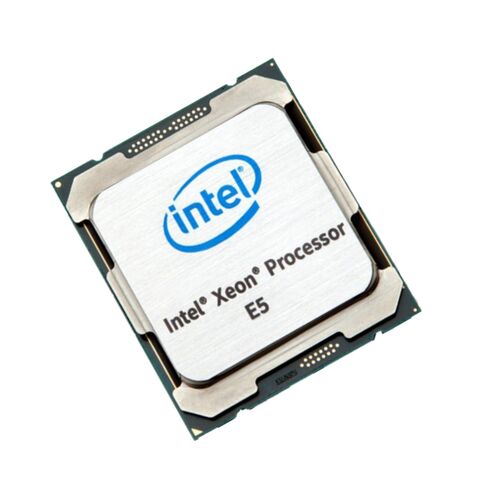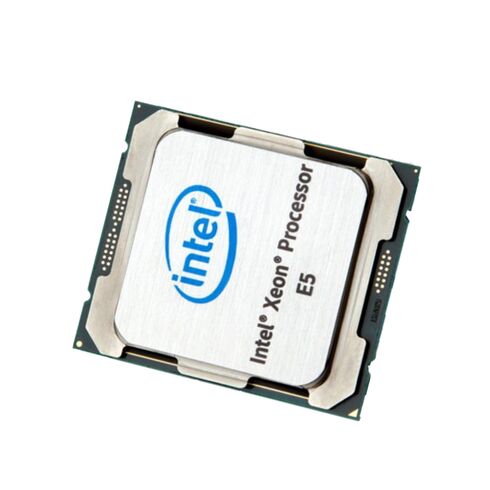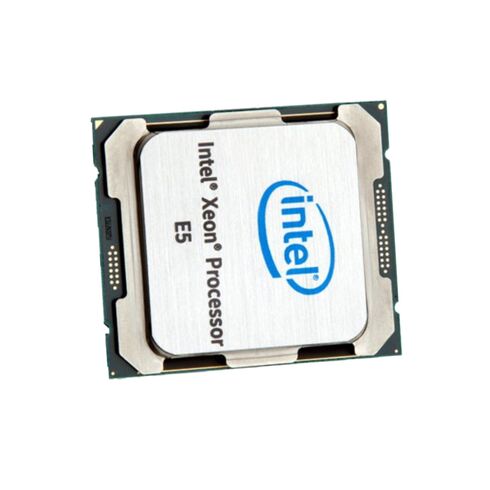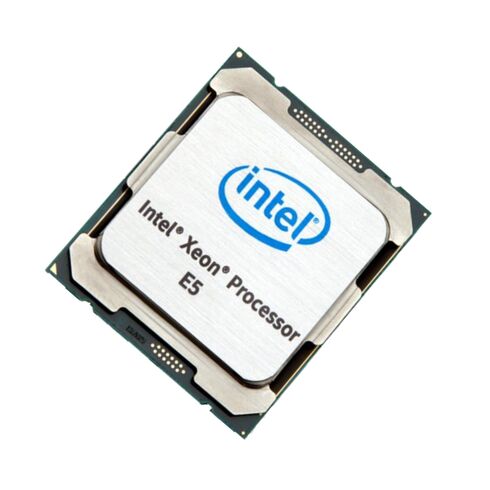SR20A Intel Xeon E5-2603V3 1.6GHz 15MB L3 Cache 6.4gt/S Qpi Speed Processor
- — Free Ground Shipping
- — Min. 6-month Replacement Warranty
- — Genuine/Authentic Products
- — Easy Return and Exchange
- — Different Payment Methods
- — Best Price
- — We Guarantee Price Matching
- — Tax-Exempt Facilities
- — 24/7 Live Chat, Phone Support
- — Visa, MasterCard, Discover, and Amex
- — JCB, Diners Club, UnionPay
- — PayPal, ACH/Bank Transfer (11% Off)
- — Apple Pay, Amazon Pay, Google Pay
- — Buy Now, Pay Later - Affirm, Afterpay
- — GOV/EDU/Institutions PO's Accepted
- — Invoices
- — Deliver Anywhere
- — Express Delivery in the USA and Worldwide
- — Ship to -APO -FPO
- — For USA - Free Ground Shipping
- — Worldwide - from $30
Overview of the Server Processor
Product Details
- Type of Product: Server Processor
- Manufacturer: INTEL Corporation
- Part Number: SR20A
- Model: E5-2603v3
Technical Specifications
Processor Architecture
- Cores: Six-core
- Base Clock Frequency: 1.6 GHz
- QuickPath Interconnect (QPI) Speed: 6.4 GT/s
- Number of QPI Links: 2
- Instruction Set: 64-bit
- Instruction Set Extensions: AVX
Cache and Memory
- L3 Cache Size: 15 MB
Manufacturing Process
- Technology Node: 22 nm
- Maximum Thermal Design Power (TDP): 85 W
Compatibility
Socket Information
- Supported Processor Socket: FCLGA2011-3
Key Features
Performance Benefits
- Enhanced multi-threading capabilities due to six processing cores.
- Efficient data transfer with high QPI speed.
- Significant cache memory ensures swift data access.
- Optimized thermal management with a moderate TDP rating.
Use Cases
Ideal Applications
- Enterprise-level server applications.
- Data center operations requiring reliable performance.
- Workloads benefiting from high core count and cache size.
Core Count
The Intel Xeon E5-2603V3 Processor is equipped with 6 cores, making it an ideal choice for users who require high-performance computing capabilities. The core count refers to the number of independent processing units within a CPU. With more cores, the processor can handle multiple tasks simultaneously, resulting in improved multitasking capabilities and overall system performance.
Increased Processing Power
Having 6 cores allows the Intel Xeon E5-2603V3 Processor to execute instructions in parallel, significantly increasing the processing power. This means that tasks can be completed faster, resulting in reduced waiting times and improved productivity. Whether you are running resource-intensive applications or handling complex calculations, the additional cores ensure that your system can handle the workload efficiently.
Enhanced Multitasking
Multitasking has become an essential aspect of modern computing. With numerous applications running simultaneously, a processor with a higher core count can distribute the workload across its cores, ensuring smooth operation without any noticeable slowdowns. The Intel Xeon E5-2603V3 Processor's 6 cores enable seamless multitasking, allowing you to work on multiple tasks without experiencing significant performance degradation.
Optimized Virtualization Performance
Virtualization has revolutionized the way businesses operate by enabling the consolidation of multiple virtual machines onto a single physical server. The Intel Xeon E5-2603V3 Processor's 6 cores provide ample resources for hosting multiple virtual machines simultaneously without compromising performance. This allows businesses to maximize their server utilization and reduce infrastructure costs.
Efficient Server Workloads
In server environments, where responsiveness and reliability are critical, the Intel Xeon E5-2603V3 Processor's 6 cores ensure that the system can handle demanding workloads efficiently. Whether you are running databases, web servers, or enterprise applications, the processor's core count ensures that the server can handle multiple requests simultaneously, providing a smooth and uninterrupted user experience.
Improved Gaming Performance
Gaming enthusiasts can also benefit from the Intel Xeon E5-2603V3 Processor's 6 cores. Many modern games are designed to utilize multiple cores, allowing for more realistic graphics and smoother gameplay. With 6 cores at your disposal, you can enjoy a seamless gaming experience without worrying about performance bottlenecks.
Future-Proofing
Investing in a processor with a higher core count is an excellent strategy for future-proofing your system. As software and applications become more resource-intensive and capable of utilizing multiple cores efficiently, having 6 cores ensures that your system can handle upcoming demands without requiring an immediate upgrade.
Base Clock Speed
The Intel Xeon E5-2603V3 Processor boasts a base clock speed of 1.6GHz. The base clock speed represents the frequency at which the processor operates under normal conditions without any turbo boost or overclocking. It plays a crucial role in determining the overall performance and responsiveness of the CPU.
Efficient Task Execution
The base clock speed of 1.6GHz ensures that the Intel Xeon E5-2603V3 Processor can execute tasks quickly and efficiently. It determines how fast the processor can retrieve and process data, perform calculations, and execute instructions. With a higher base clock speed, tasks are completed faster, resulting in improved overall system performance.
Smooth Multitasking
When running multiple applications simultaneously, a higher base clock speed allows for smoother multitasking. Each application requires processing power to perform its tasks, and a faster base clock speed ensures that each application receives its fair share of resources promptly. This prevents noticeable slowdowns and ensures a seamless multitasking experience.
Responsiveness in Single-Threaded Applications
Not all applications can utilize multiple cores efficiently. Single-threaded applications rely on a single core for their execution. In such cases, the base clock speed becomes crucial as it determines how quickly the processor can complete tasks. The Intel Xeon E5-2603V3 Processor's base clock speed of 1.6GHz ensures excellent responsiveness in single-threaded applications, providing a smooth user experience.
Improved Gaming Performance
Gaming performance is greatly influenced by the base clock speed. Many games rely heavily on the performance of a single core, making a higher base clock speed essential for smooth gameplay. The Intel Xeon E5-2603V3 Processor's 1.6GHz base clock speed ensures that demanding games can be played without experiencing significant performance bottlenecks.
Efficient Software Compilation
Software developers can benefit from a higher base clock speed when compiling large codebases. Compiling software involves translating human-readable code into machine code, a process that requires significant computational resources. The Intel Xeon E5-2603V3 Processor's base clock speed allows for faster software compilation, reducing development time and increasing productivity.
Overclocking Potential
The Intel Xeon E5-2603V3 Processor's base clock speed of 1.6GHz provides a solid foundation for overclocking enthusiasts. Overclocking involves increasing the base clock speed beyond its default value to achieve even higher performance levels. With a higher starting point of 1.6GHz, users can push the boundaries of their processor's performance while maintaining stability.
L3 Cache
The Intel Xeon E5-2603V3 Processor features a generous 15MB L3 cache, contributing to its excellent performance and responsiveness. The L3 cache is a high-speed memory buffer located on the processor chip, closer to the cores than the main system memory. It plays a crucial role in accelerating data access and improving overall system performance.
Accelerated Data Access
The L3 cache acts as a temporary storage space for frequently accessed data and instructions. With a larger L3 cache like the Intel Xeon E5-2603V3 Processor's 15MB, more data can be stored closer to the cores, reducing the latency associated with accessing data from the main memory. This results in faster data retrieval and improved overall system performance.
Reduced Memory Latency
Accessing data from the main memory involves higher latency compared to accessing it from the cache. The larger L3 cache size of the Intel Xeon E5-2603V3 Processor ensures that more data can be stored on-chip, reducing the frequency of memory accesses. This effectively reduces memory latency and improves the responsiveness of applications and tasks.
Improved Gaming Performance
The L3 cache plays a crucial role in gaming performance. Games often require quick access to large amounts of data, such as textures, models, and game assets. With a larger L3 cache, like the Intel Xeon E5-2603V3 Processor's 15MB, more game data can be stored closer to the cores, resulting in reduced loading times and improved overall gaming performance.
Enhanced Virtualization Performance
Virtualization environments benefit greatly from a larger L3 cache. Hosting multiple virtual machines on a single physical server requires efficient data access to ensure smooth operation. The Intel Xeon E5-2603V3 Processor's 15MB L3 cache allows for faster retrieval of frequently accessed virtual machine data, improving overall virtualization performance.
Efficient Content Creation
Content creation tasks, such as video editing, image rendering, and 3D modeling, often involve working with large data sets. With a larger L3 cache, the Intel Xeon E5-2603V3 Processor can store more temporary data and instructions closer to the cores, reducing the time required for data transfers between the cache and the main memory. This results in improved efficiency and faster content creation.
Seamless Database Operations
Databases rely heavily on data access speed. With a larger L3 cache, the Intel Xeon E5-2603V3 Processor can store frequently accessed data closer to the cores, reducing the time required for database operations. This leads to improved query response times, faster data retrieval, and increased overall database performance.
QPI Speed
The Intel Xeon E5-2603V3 Processor boasts a QPI (QuickPath Interconnect) speed of 6.4GT/s. The QPI is a high-speed interface that connects the processor to other components in the system, such as other processors or memory modules. The QPI speed plays a crucial role in determining how quickly data can be transferred between these components.
Faster Data Transfer
The QPI speed directly affects how quickly data can be transferred between the processor and other system components. With a QPI speed of 6.4GT/s, the Intel Xeon E5-2603V3 Processor ensures rapid communication between processors or memory modules, resulting in reduced latency and improved overall system performance.
Enhanced Multi-Processor Scalability
In multi-processor systems, efficient communication between processors is vital for optimal performance. The Intel Xeon E5-2603V3 Processor's 6.4GT/s QPI speed enables fast interconnectivity between multiple processors, allowing them to work together seamlessly and efficiently. This ensures that the system can scale its processing power effectively to handle demanding workloads.
Improved Memory Bandwidth
The QPI speed also affects memory bandwidth, which is the rate at which data can be read from or written to the memory. With a higher QPI speed, the Intel Xeon E5-2603V3 Processor can deliver improved memory bandwidth, enabling faster data access and manipulation. This is particularly beneficial for memory-intensive applications such as databases or scientific simulations.
Efficient Virtual Machine Migration
In virtualized environments, where virtual machines may need to be migrated between physical servers, a fast QPI speed is crucial. The Intel Xeon E5-2603V3 Processor's 6.4GT/s QPI speed enables rapid transfer of virtual machine data between servers, reducing downtime and ensuring seamless migration without noticeable performance degradation.
Improved High-Performance Computing
High-performance computing (HPC) applications often require fast communication between processors to distribute computational tasks effectively. The Intel Xeon E5-2603V3 Processor's 6.4GT/s QPI speed ensures efficient interconnectivity between multiple processors in an HPC cluster, enabling faster data exchange and improved overall computational performance.
Future-Proofing
Investing in a processor with a high QPI speed is beneficial for future-proofing your system. As technology advances and demands for data transfer speeds increase, having a faster QPI speed ensures that your system can handle upcoming requirements without requiring immediate hardware upgrades. The Intel Xeon E5-2603V3 Processor's 6.4GT/s QPI speed provides excellent scalability and support for future advancements.
Socket Type
The Intel Xeon E5-2603V3 Processor utilizes the Fclga 2011-3 socket type. The socket type refers to the physical interface between the processor and the motherboard. It plays a crucial role in determining compatibility and upgrade options for users.
Wide Compatibility
The Fclga 2011-3 socket type utilized by the Intel Xeon E5-2603V3 Processor is compatible with a wide range of motherboards. This ensures flexibility and ease of integration, allowing users to choose from multiple motherboard options based on their specific requirements. It also facilitates future upgrades, as the socket type is likely to be supported by future generations of processors.
Support for Multiple Processors
The Fclga 2011-3 socket type is designed to support multi-processor configurations, enabling users to harness the power of multiple processors in their system. This is particularly beneficial for high-performance computing, virtualization, and server environments where increased processing power is essential. The Intel Xeon E5-2603V3 Processor's Fclga 2011-3 socket type allows for efficient multi-processor scalability.
Upgradeability
Investing in a processor with a widely supported socket type ensures upgradeability in the future. The Fclga 2011-3 socket type used by the Intel Xeon E5-2603V3 Processor is expected to be compatible with future processor releases, providing users with the option to upgrade their CPU without requiring a complete motherboard replacement.
Flexible System Customization
The Fclga 2011-3 socket type allows users to customize their system according to their specific needs and preferences. With a variety of compatible motherboards available, users can choose additional features such as support for multiple graphics cards, high-speed storage interfaces, or expanded memory capacities. This flexibility ensures that the system can be tailored to meet a wide range of requirements.
Scalable Server Configurations
In server environments, the Fclga 2011-3 socket type allows for scalable configurations to meet increasing demands. By supporting multiple processors, servers can be upgraded with additional CPUs to handle higher workloads or accommodate more virtual machines. This scalability ensures that the server can grow alongside the business's needs, providing a cost-effective solution.
Long-Term Investment
Choosing a processor with a widely supported socket type, such as the Intel Xeon E5-2603V3 Processor's Fclga 2011-3, is a long-term investment. It ensures compatibility with future processors and motherboard releases, allowing for incremental upgrades without requiring a complete system overhaul. This extends the lifespan of your system and provides value for money over an extended period.
Manufacturing Technology
The Intel Xeon E5-2603V3 Processor utilizes a 22nm manufacturing technology. The manufacturing technology refers to the size of the transistors and other components within the processor. A smaller manufacturing technology brings several benefits in terms of performance, power efficiency, and heat dissipation.
Improved Performance
Smaller transistors in the 22nm manufacturing technology allow for increased transistor density within the processor. This results in more transistors being packed into a smaller space, increasing the processing power and performance capabilities of the Intel Xeon E5-2603V3 Processor. With improved performance, users can expect faster task execution and enhanced overall system responsiveness.
Power Efficiency
The 22nm manufacturing technology offers improved power efficiency compared to larger manufacturing processes. Smaller transistors require less power to switch states, reducing power consumption. The Intel Xeon E5-2603V3 Processor's 22nm technology ensures that power is utilized efficiently, resulting in lower energy costs and reduced environmental impact.
Heat Dissipation
Smaller transistors also contribute to improved heat dissipation. With a smaller manufacturing technology, the Intel Xeon E5-2603V3 Processor generates less heat during operation. This allows for more effective cooling solutions, ensuring that the processor can operate at optimal temperatures without the risk of thermal throttling or overheating.
Enhanced Overclocking Potential
The 22nm manufacturing technology provides improved headroom for overclocking enthusiasts. Smaller transistors offer better control over voltage and power consumption, allowing users to push the processor's performance beyond its default specifications. With the Intel Xeon E5-2603V3 Processor's 22nm technology, users can explore the limits of their CPU while maintaining stability and reliability.
Reduced Silicon Costs
Smaller manufacturing technologies result in increased yields per wafer, reducing the overall cost of silicon production. This cost reduction is often passed on to consumers, making processors based on smaller manufacturing technologies, such as the Intel Xeon E5-2603V3 Processor, more affordable. Users can benefit from advanced technology without breaking the bank.
Future-Proofing
Investing in a processor based on a smaller manufacturing technology is beneficial for future-proofing your system. As semiconductor technology advances, smaller manufacturing processes become more prevalent, offering improved performance and efficiency. By choosing a processor with a 22nm manufacturing technology like the Intel Xeon E5-2603V3 Processor, users can ensure compatibility and support for future hardware advancements.
Power Consumption
The Intel Xeon E5-2603V3 Processor has a power consumption rating of 85W. Power consumption refers to the amount of electrical energy consumed by the processor during operation. A lower power consumption rating brings several benefits, including reduced energy costs, heat generation, and environmental impact.
Energy Efficiency
The Intel Xeon E5-













